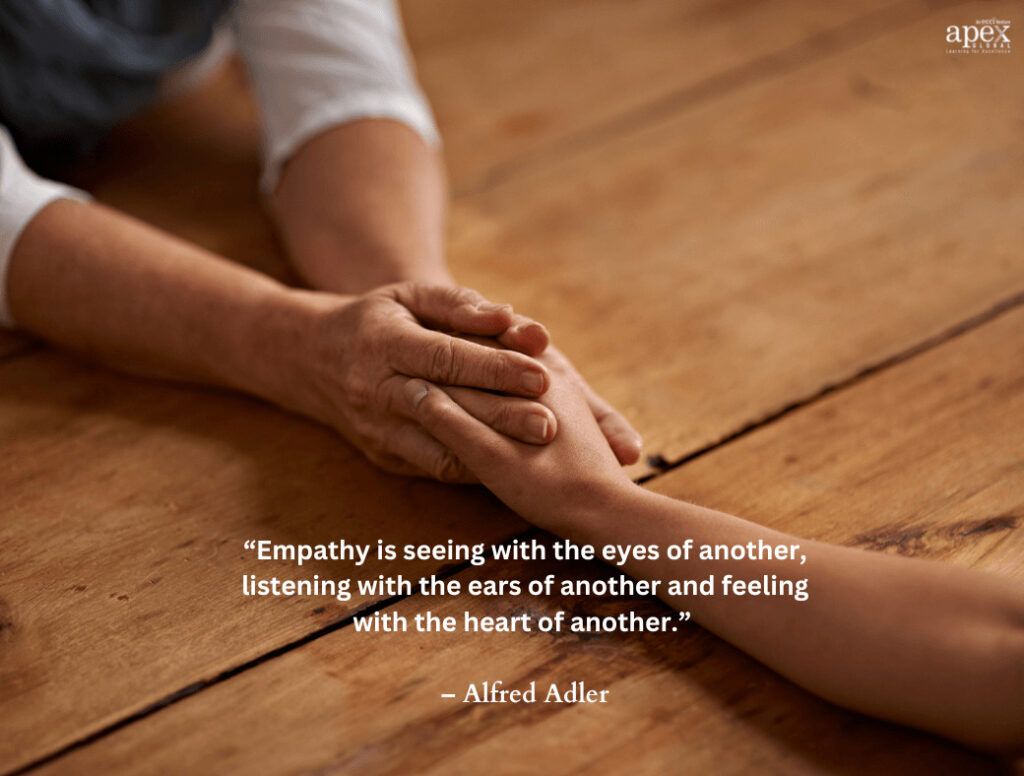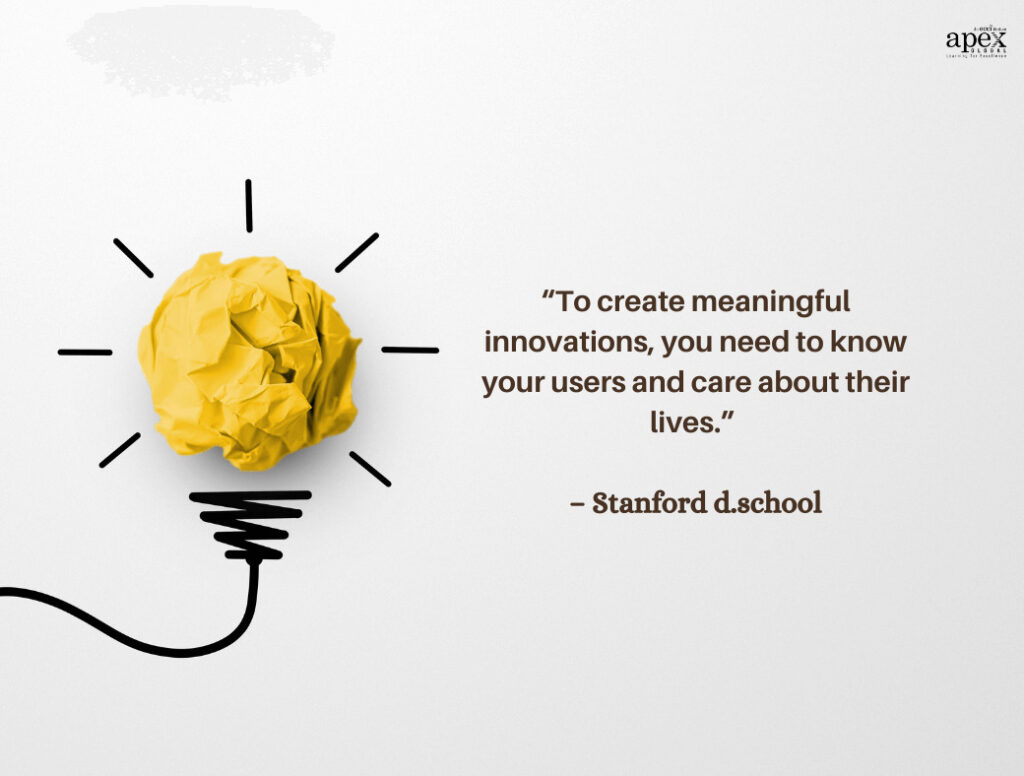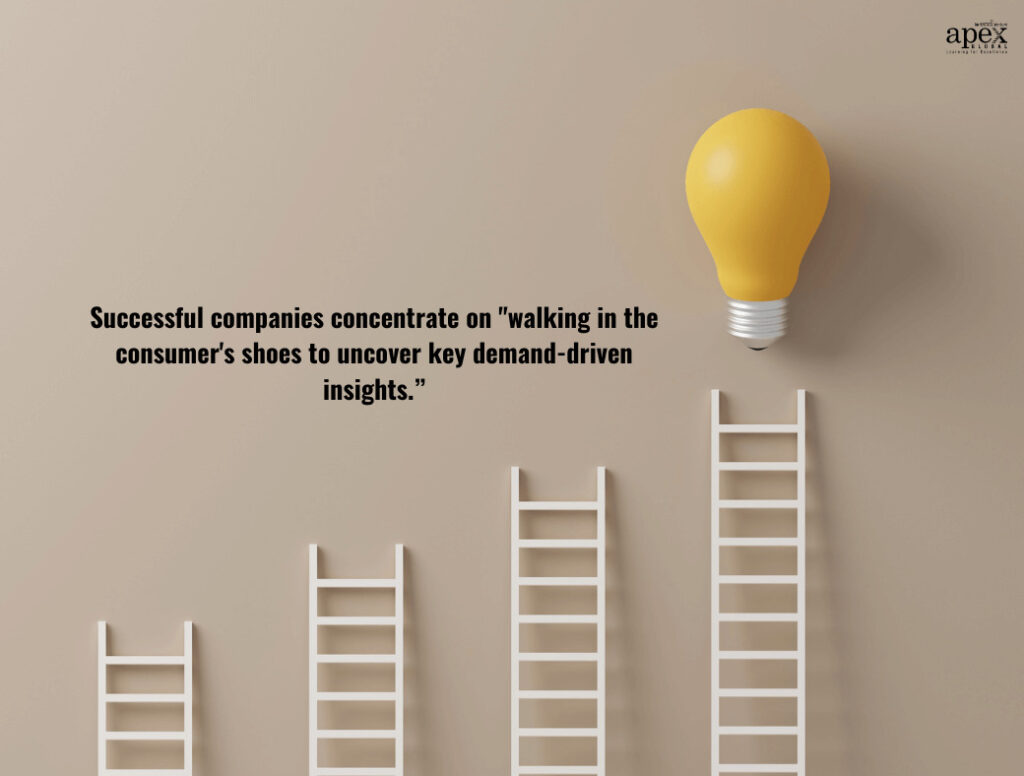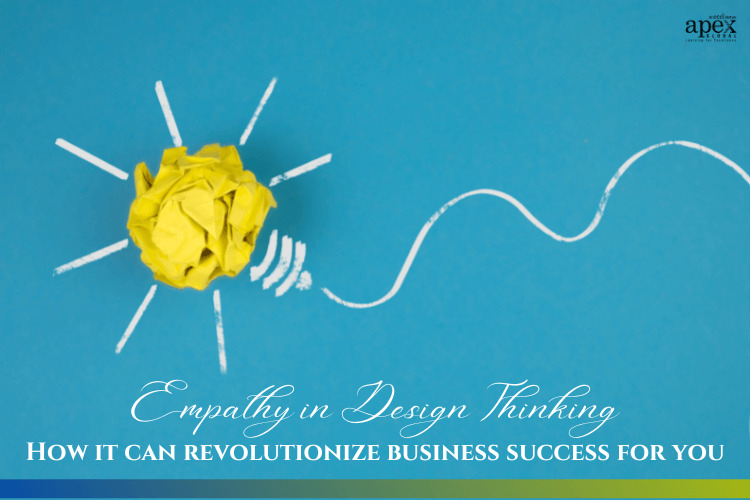What do companies like Amazon, Apple, and Airbnb have in common?
Apart from being greatly successful in their respective industries, these companies place a huge emphasis on understanding their customers.
But understanding people can be really difficult. Let’s face it – we humans are unpredictable.
Then how did these companies succeed? By empathizing with their customers! Empathy is the heart of the design thinking approach and human-centric design.
So what exactly does empathy mean? And how do you leverage empathy to create successful products?
In this blog post, we will cover what empathy is, why it is important, and how to efficiently empathize with your users. Let’s dive in!
What you'll find in this article
What is empathy?

The Nielsen Norman Group defines empathy as “the ability to fully understand, mirror, then share another person’s expressions, needs, and motivations.”
In other words, when you put aside your perception of a situation and look at it from another person’s eyes, it is called empathy. It is the ability to see, feel, and experience a situation from someone else’s point of view.
Of course, we cannot experience the situation exactly as another person would, but we can try to understand their point of view to the best of our ability, which is what empathizing is all about.
We can research their environments, reactions, and tendencies and use this information to place ourselves in their position. If done correctly, this information could be one of your most powerful resources for building a solid product.
Sometimes, people confuse empathy with sympathy, but they are not the same. While they both mean to understand the situation of another person, sympathy is more distant than empathy is.
Sympathizing is expressing feelings for someone’s situation, whereas empathizing means to try and feel those emotions first-hand.
It’s important to empathize rather than sympathize so that you can understand your users’ motivations and be able to represent what they feel, think, and ultimately desire.
Why is empathy important in design thinking?

Designers tend to jump to solutions/conclusions too quickly, make design decisions on behalf of their users, and think in their minds as a user. But if they aren’t taking the time to listen to the users and understand them, they might miss opportunities to design what the customers actually need.
Products developed without empathy would only serve the needs of an impression of the end-user and rarely serve their real needs and expectations.
That’s why empathy is very important in the design process. It allows you to shelve your assumptions and get to the heart of what people really want so that you can develop solutions that are meaningful, genuinely valuable, easy to understand, and pleasantly satisfying-even delightful- to use for the target audience.
Empathize is actually the first phase of the design thinking process, followed by define, ideate, prototype, and test. While design thinking is famously not linear – beginning with empathy is critical. Learn more about prototyping in design thinking here.
The empathize phase is all about getting into your end users’ heads to understand their experiences and problems so you can design better solutions. At this stage, we are detectives working to extract information about unmet user needs.
Why do they behave in a certain way? Why do they prefer to do this instead of that? Why do they click here rather than there when provided with a certain screen or page?
These are the kinds of insights you’ll uncover during the empathize phase, and they’ll help you design products that cater to your users’ unmet needs. Learn more about how design thinking helps in a business here.
Why empathy is crucial for business

A business can’t make a profit if the product is useless to the customer. Empathy enables you to identify your customers’ pain points and relate them to the requirements for business success.
There are three parameters that we can use to measure the success of a design.
- Desirability – does the product meet the user’s wants or needs?
- Viability – does the product bring profit or business benefits to your company?
- Feasibility – do you have the technology to create the product?
It’s not enough that the technology exists (feasibility) and that business benefits may be derived (viability). Users need to feel a sense of desirability toward a solution. We can only design a desirable product when people’s needs, experiences, wants, and preferences are properly understood.
For example, let’s consider the case of Oral B kid’s toothbrush. Given that kids have smaller hands than adults do, one can assume that children’s toothbrushes should be like adult toothbrushes but smaller and skinnier. Makes sense, right?
However, by empathizing with their target audience, the design team found that when kids were brushing their teeth, they were using their fists and holding their toothbrushes too far up that they were hitting their own faces as they brushed.
From this insight, they realized that kids need fat squishy toothbrushes instead of skinnier ones and designed accordingly. As a result, Oral B had the best-selling kids’ toothbrush in the world for 18 months.
How to empathize
All of this sounds great, but how do you empathize with your users?
There are many methods used to gain user empathy, like customer shadowing, surveys, user interviews, stakeholder interviews, diary studies, storyboards, body storming, video ethnography, requirement gathering, field studies, etc.
However, there are 3 important things that you should consider when executing the empathy stage.
a. Beginner’s mindset

We all have our assumptions – and while it can be good to be knowledgeable about topics, intentionally unlearning is the best route forward when it comes to the empathize phase in design thinking.
Forget everything you know and assume a beginner’s mindset. Think of it as a mental reset; keep your mind blank, free of any preconceived ideas and beliefs.
And remember,
- No judging – Observing users with no judgment of their problems, perceptions, values, or knowledge.
- Question everything – Even the parts you think you know. Always ask questions – even if it feels excessive.
- Find patterns – Look for common patterns that emerge among your users
Listen attentively to what other people are saying, and you’ll uncover much deeper insights that will surprise both you and the user.
b. The 5 whys
Sakichi Toyoda, the founder of Toyota Industries, developed the ‘5 Whys’ technique in the 1930s, and it’s so good that Toyota still uses it to solve problems to this day.
This method is an iterative interrogation process that enables you to get to the heart of the user’s problem.
This technique involves asking “why?” five times to get to the root of the issue. Through repetitiveness – the ‘5 whys’ seek to understand the cause and effect of the customer’s problem.
Think of a 5-year-old child that is obsessed with a topic. Whenever you get an answer, ask, “Why is that?” continuously until you get to the root of the problem. This process can uncover various underlying problems quickly and effectively.
c. Conducting interviews with empathy
Conduct interviews with people who have first-hand experience with what you are trying to create. When interviewing, try and place yourself in the shoes of your customers. Try to figure out what drives them, what frustrates them, and what their values are when it comes to the product.
Only by trying to feel what your users are feeling can you design a product that resonates.
Questions to consider while interviewing:
- Who am I making this for?
- What do these people do?
- What is their problem? What matters to this person?
- What motivates or discourages them?
- Where do they experience frustration?
Asking the right kinds of open-ended questions and attentively listening to their answers (verbal and nonverbal) is the way to uncover hidden needs.
Open-ended questions are questions that do not have simple answers like “yes” or “no” and require the person to give a longer response.
Examples of open-ended questions are:
- What are your favorite things about this activity?
- How did performing that activity make you feel?
- If you could change something about this activity, what would it be?
These kinds of questions help researchers get a deeper understanding of their user and the context in which the user operates.
Final thoughts
Empathy is a compass that guides us along the innovation path as we set out to discover hidden problems that even the customer may not be aware of.
Keep in mind that gaining empathy isn’t something you get, and then you have it forever. It is a skill that needs to be continuously practiced and honed.
So, no matter what, practice, practice, and practice to improve your empathy skills.
If you want to learn more about empathy in design thinking, we recommend attending a design thinking workshop. APEX Global’s Design Thinking Practitioner course equips you with all the knowledge and skills you need to start incorporating an empathy-driven approach into your business. Enroll today!
Already using design thinking to solve problems at your organization? Connect with us and share your experience. We’d love to hear from you!


